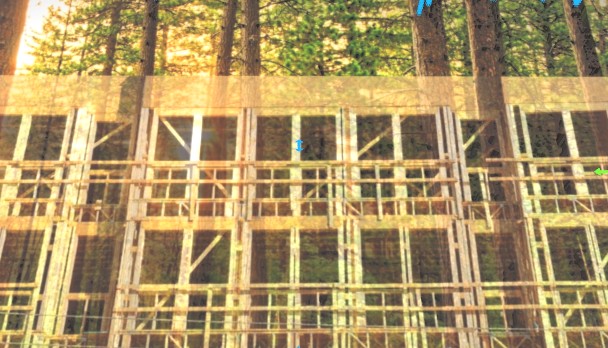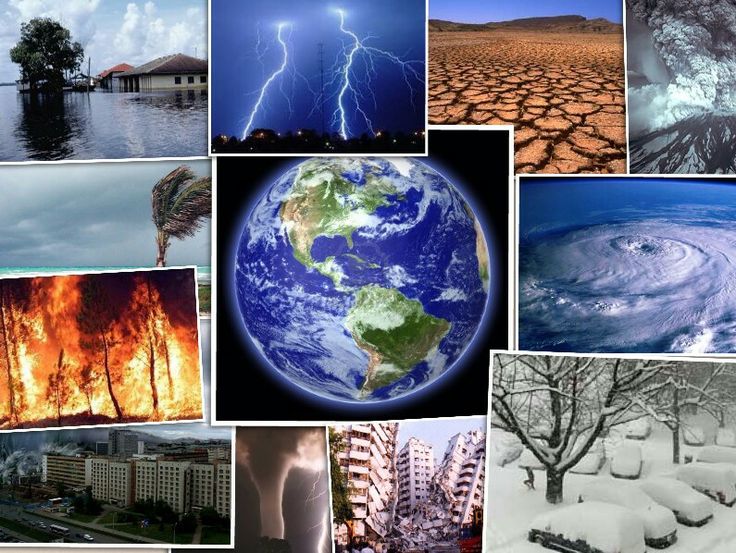Open Letter on Cross Laminated Timber and Forest Stewardship




Recently the Sierra Club and a number of other environmental groups put together an open letter that calls for making the connection between tall wood / mass timber / CLT, “carbon-smart” forestry and conservation of the most carbon-rich and ecologically valued forests.
The group is not exactly clear on how this letter will be used, but believes there is a need for education and advocacy as interest in CLT grows, and hopefully this letter will help. Many of the observations of the Open Letter parallel the findings of the Building resilience Coalition study on Carbon Sequestration of Wood-Based Building Products. If you are interested and wish to add your name, contact Jason Grant, Sierra Club Forest Certification & Green Building Team, c/o www.jasongrantconsulting.com
Here is the Open Letter
Updated to May 18, 2018
Climate-Smart Cross-Laminated Timber: Mass Timber Buildings and Forest Stewardship[i]
Catastrophic climate change is an unprecedented threat to earth’s life support systems.
Recognizing that the energy used to construct and operate buildings accounts for approximately 40% of global greenhouse gas (GHG) emissions[ii], we, the undersigned, share a goal of drastically reducing, and ultimately reversing, the carbon impact of the built environment.
In recent decades, the green building community has led a revolution that has increased the energy efficiency of buildings and resulted in significant reductions in carbon emissions.
But this does not address those emissions generated from the extraction, manufacturing, transport and use of building materials, which are estimated to account for roughly 10% of the global total[iii].
The next frontier, then, is to tackle the embodied carbon of the stuff that buildings are made of. Collectively, we need buildings whose net carbon is neutral or even positive.
Recently, “Tall Wood” buildings that use mass timber products like Cross-Laminated Timber (CLT) in their structures have gained prominence as a strategy for pursuing this goal.
Proponents of mass timber maintain that emissions can be reduced by substituting wood for other building materials because trees capture and store atmospheric carbon.
Too often, however, the carbon benefit of such substitution is exaggerated because the impacts of timber extraction on forests are left out of the equation.
Scientists increasingly recognize that a key component of efforts to mitigate the effects of climate change is to reduce logging-related greenhouse gas emissions through improvements in forest management and increases in forest recovery and protection.[iv]
While there is no simple, one-size-fits-all answer as to how best to harvest timber to optimize carbon, in general…
- Logging of the world’s remaining mature and primary forests, as well as unroaded/undeveloped and other intact forest landscapes, should Research indicates that forest carbon is maximized where there are the highest levels of forest protection and the least amount of logging, or no logging at all.[v] Therefore, we should permanently protect those forests that are the most carbon-rich, including U.S. federal public forestlands[vi];
- Older forests sequester and store more carbon than younger forests, so there is a forest carbon benefit if logging rotations (intervals between harvests) are lengthened. [vii]. Forests should be managed to optimize the amount of carbon they sequester and store, and not for the quickest return on investment;
- Forest management that is less intensive (e.g. smaller clearcuts, more live-tree retention, wider riparian buffers) results in less overall emissions of forest carbon than more intensive management (e.g. industrial tree farms that rely on large, frequent clearcuts and applications of GHG-emitting fertilizers)[viii];
- Tree plantations should not be established at the expense of natural forests and, since forests that are managed as ecosystems rather than monocultures are more resilient in the face of climate change[ix], and have higher carbon storage, many existing plantations should be managed toward a more natural condition;
- Afforestation (planting trees in areas where there are none currently and it is ecologically appropriate to do so) is desirable because it brings near-term carbon benefits and will increase wood supply in the long term.
Not only would taking these actions improve the management of forest carbon, it would yield numerous other important environmental benefits including less harm to wildlife habitat, relatively higher ecological complexity and biological diversity, and reduced negative impacts on soil and water quality[x].
To sum up, the climate implications of mass timber buildings turns on what happens in the forest.
A broad-based transition to CLT that leads to significant increases in environmentally harmful logging and forest degradation would only deepen our problems: CLT cannot be climate-smart unless it comes from climate-smart forestry.
While a perfect mechanism to identify such products does not yet exist, FSC certification of privately owned forestlands can support progress in the right direction.
Signed:
Jason Grant, Sierra Club
Rolf Skar, Greenpeace USA
Debbie Hammel, Natural Resources Defense Council,
Jim Ace, Stand
Dominick DellaSala, Ph. D., Geos Institute
Chad Hanson, Ph. D. John Muir Project
Denis Hayes, Bullitt Foundation
Peter Goldman, Washington Forest Law Center
Adam Colette, Dogwood Alliance
Bill Barclay, Rainforest Action Network
Lisa Remlinger, Washington Environmental Council
Randi Spivak, Center for Biodiversity
David Arkin, AIA, California Straw Building Assoc.
Bruce King, PE, Ecological Building Network
Larry Strain, FAIA LEED AP, Siegel & Strain Architects
Stacy Smedley, LEED AP BD+C, LFA Skanska USA Building
Stephen Tilly AIA, LEED AP, Stephen Tilly, Architect
Tom Joyce, MScFE, University of Alberta
David Walsh, AIA, LEED AP BD+C, Sellen
Jean Carroon, FAIA, LEED Fellow. Goody Clancy
Ann Edminster, M. Arch, LEED AP, Design AVEnues
Simon Sturgis, Sturgis Carbon Profiling LLP
Duncan Cox, Thornton Tomasetti
Tim Krahn, P. Eng., LEED AP, Building Alternatives Inc.
Dave Bennink, Re-Use Consulting
Chris Magwood, Endeavor Centre
And the list of signatories just keeps growing
[i] For a list of supporting citations see http://content.sierraclub.org/ourwildamerica/resources-0
[ii] http://www.worldgbc.org/sites/default/files/GABC_Global_Status_Report_V09
november_FINAL.pdf
[iii] King, B. (2017). The New Carbon Architecture. New Society Publishers.
[iv] Ripple et al. (2017), in press in BioScience (https://academic.oup.com/bioscience/article/doi/10.1093/biosci/bix125/4605229); Griscom et al. 2017. Natural climate solutions. Proceedings of the National Academy of Sciences of the United States of America 114: 11645-11650; https://www.socialnews.xyz/2017/11/12/new-actions-to-cut-forest-use-emissions-set-in-place/
[v] Depro et al. 2008. Public land, timber harvests, and climate mitigation: quantifying carbon sequestration potential on U.S. public timberlands. Forest Ecology and Management 255: 1122-1134; Campbell et al. 2012. Can fuel-reduction treatments really increase forest carbon storage in the western US by reducing future fire emissions? Frontiers in Ecology and Environment 10: 83-90.
[vi] Notably, the Pacific Northwest and southeast Alaska are unique in having some of the most carbon dense forests in the world but carbon-rich forests are found nationwide. Krankina, O., et al. 2014. High biomass forests of the Pacific Northwest: who manages them and how much is protected? Environmental Management 54:112-121. Ibisch, P.L., et al. 2017. A global map of roadless areas and their conservation status. Science 354:1423-1427. Kormos, C.F et al. 2017. Primary forests: definition, status and future prospects for global conservation. Earth Systems and Environmental Sciences, Elsevier, United Kingdom.
http://www.sciencedirect.com/science/article/pii/B9780124095489097116
Krankina, O. et al. 2014. Ibid. This study identified most of the most carbon dense forests were on public lands and most were threatened by logging on private lands.
[vii] Replacing unlogged forests with plantations results in 30-60% reduction in stored carbon: Mackey, B. 2014. Counting trees, carbon and climate change. The Royal Statistical Society, Feb. 2014, p. 19-23. Also see: Law, B. et al. 2004. Disturbance and climate effects on carbon stocks and fluxes across Western Oregon USA. Global Change Biology 10:1429-1444. Luyssaert, S. et al. 2009. Old-growth forests as global carbon sinks. Nature 455:1003-1006. Krankina, O., et al. 2012. Carbon balance on federal forest lands of western Oregon and Washington: the impact of the Northwest Forest Plan. Forest Ecology and Management 286:171-182. Mackey, B. et al. 2013. Untangling the confusion around land carbon science and climate change mitigation policy. Nature Climate Change 3: 552-557.
[viii] Harmon, M.E. et al. 2009. Effects of partial harvest on the carbon stores in Douglas-fir/Western Hemlock forests: a simulation study. Ecosystems 12:777-791. Hudiburg, T.W. et al. 2013. Interactive effects of environmental change and management strategies on regional forest carbon emissions. Environmental Science & Technology 47:13132-40
[ix] Watson, J.E.M. et al. 2016. Mapping vulnerability and conservation adaptation strategies under climate change. Nature Climate Change 3:989-994.
[x] Brandt, P., et al. 2014. Multifunctionality and biodiversity: Ecosystem services in temperate rainforests of the Pacific Northwest, USA. Biological Conservation 169: 362–371.
Recent Posts
The Future of Cement as a Sustainable and Resilient Building Product
The future of cement shaping up to forge a more sustainable construction industry that meets…
The Growing Importance of Resiliency in the Design and Construction of Buildings
Resiliency is becoming increasingly important in building design and construction due to the rising frequency…
GCCA Global Low Carbon Ratings for Cement and Concrete
The Global Cement and Concrete Association (GCCA) has developed a standardised low carbon rating system…
Building for Resiliency with Insulated Concrete Forms
Building with Insulated Concrete Forms (ICFs) is increasingly recognized as a critical component of modern…
Building Resiliency in the Pacific Northwest
In the Pacific Northwest, the increasing frequency and severity of climate-related disasters, such as wildfires,…
How California can rebuild safer, more resilient cities after wildfires
The catastrophic LA wildfires were a powerful reminder that governments and communities need to think…


